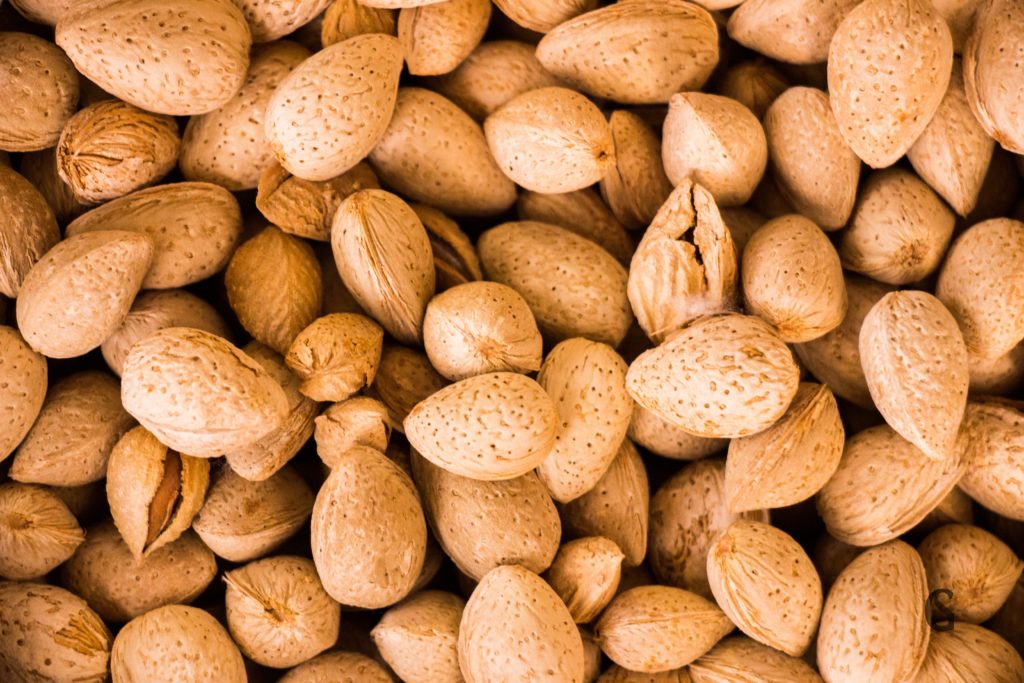
Each year, about 3 billion pounds of almonds are produced just in the state of California, leaving behind over 800,000 metric tons of biomass in the form of almond shells.
As the worldwide demand for almonds increases, scientists have been searching for ways to repurpose and add value to leftover almond shells. Usually, the shells are either sent to landfills or burned to generate electricity. However, almond shell-generated electricity is not as cheap as solar or wind energy, making this option economically unfavorable.
Scientists have also explored using almond shells to make fuel. Studies have shown that almond shells and hulls can be processed and converted into bioethanol.
Another promising option for repurposing shells is a process known as torrefaction, which involves heating the shells at 200-300 degrees Celsius. The torrefied shells can be turned into a fine powder. Researchers have found this powder can be used as a cheap, biodegradable reinforcing agent in plastics. Additives are often used in plastics to create stronger composite materials. Using almond shell powder as an additive would also reduce the overall amount of plastic being used.
While this is an attractive option for repurposing leftover almond shells, understanding whether this process is economically viable at a large scale is key to making it a reality.
In a new study, researchers at the Advanced Biofuels and Bioproducts Process Development Unit (ABPDU) at Berkeley Lab and the Joint BioEnergy Institute (JBEI) conducted an analysis that shows using torrefied almond shell powder as a plastic reinforcement is an economically viable solution, compared with converting almond waste to bioethanol.
The study was funded by the Almond Board of California, which requested the analysis from ABPDU to assist with their ongoing research into how almond woody biomass can be utilized.
“The Almond Board has studied this problem for over 10 years,” said Guangwei Huang, Associate Director of Food Research and Technology at the Board. “We know torrefaction is a promising route, but we wanted to see if the economics made sense.”
ABPDU and JBEI researchers conducted a techno-economic analysis, which involves determining the costs associated with scaling up a technology. To do this, the researchers simulated the process of almond torrefaction and the process of converting almonds to bioethanol.
They looked at every step of the process — where almonds are produced in California, what it costs to build a torrefaction facility vs. a bioethanol facility, the costs of operating these facilities, and what these facilities’ production outputs and revenues would be.
Their analysis found that the utility cost — the cost of electricity, water and steam required to operate the facility — for a torrefaction facility was higher than the shells-to-bioethanol facility. However, the bioethanol process was found to have higher capital and operating costs — the expenses involved in both the long-term and day-to-day operations. And while bioethanol itself has a higher market value, the torrefaction facility has a higher production output. Compared with the bioethanol route, using torrefied almonds shells as plastic reinforcements results in three times higher revenue.
“Adding value to agricultural wastes not only has its intrinsic benefits to the environment, but also brings new technologies, livelihoods, and job opportunities that can promote a circular economy and sustainable lifestyles,” said Dupeng Liu, a senior process engineer at ABPDU who conducted the study. “Techno-economic analysis can help decision-makers determine the most economically viable technical route and identify potential areas for improvement by assessing costs, benefits, potential risks, and potential market demand.”
The results of this study will help the Almond Board of California demonstrate that this is a viable option for repurposing almond biomass, Huang said.
“We wanted to generate this valuable third-party data to have this available to show potential investors,” Huang said. “Now it’s just a question of who’s going to jump in to get this off the ground.”